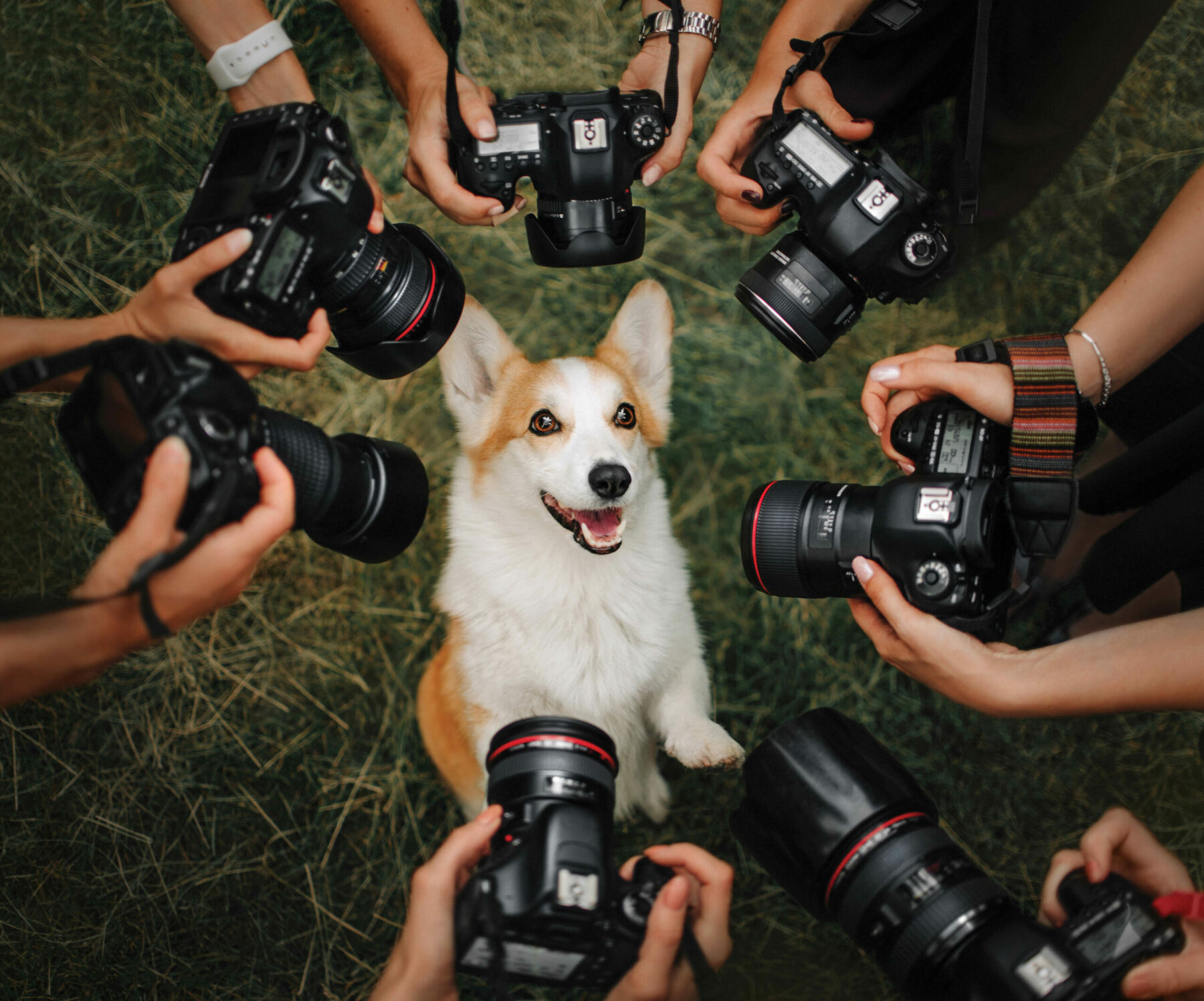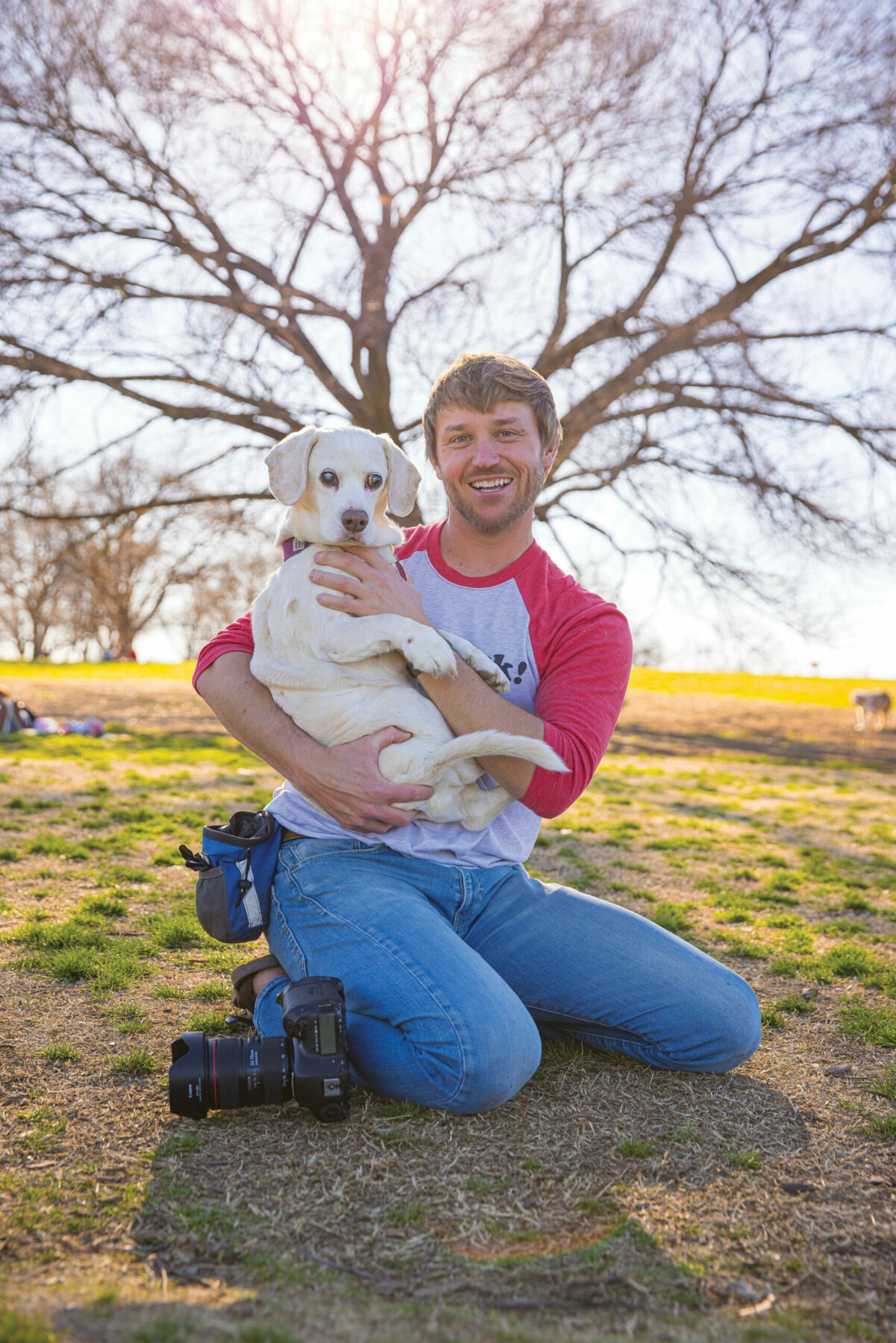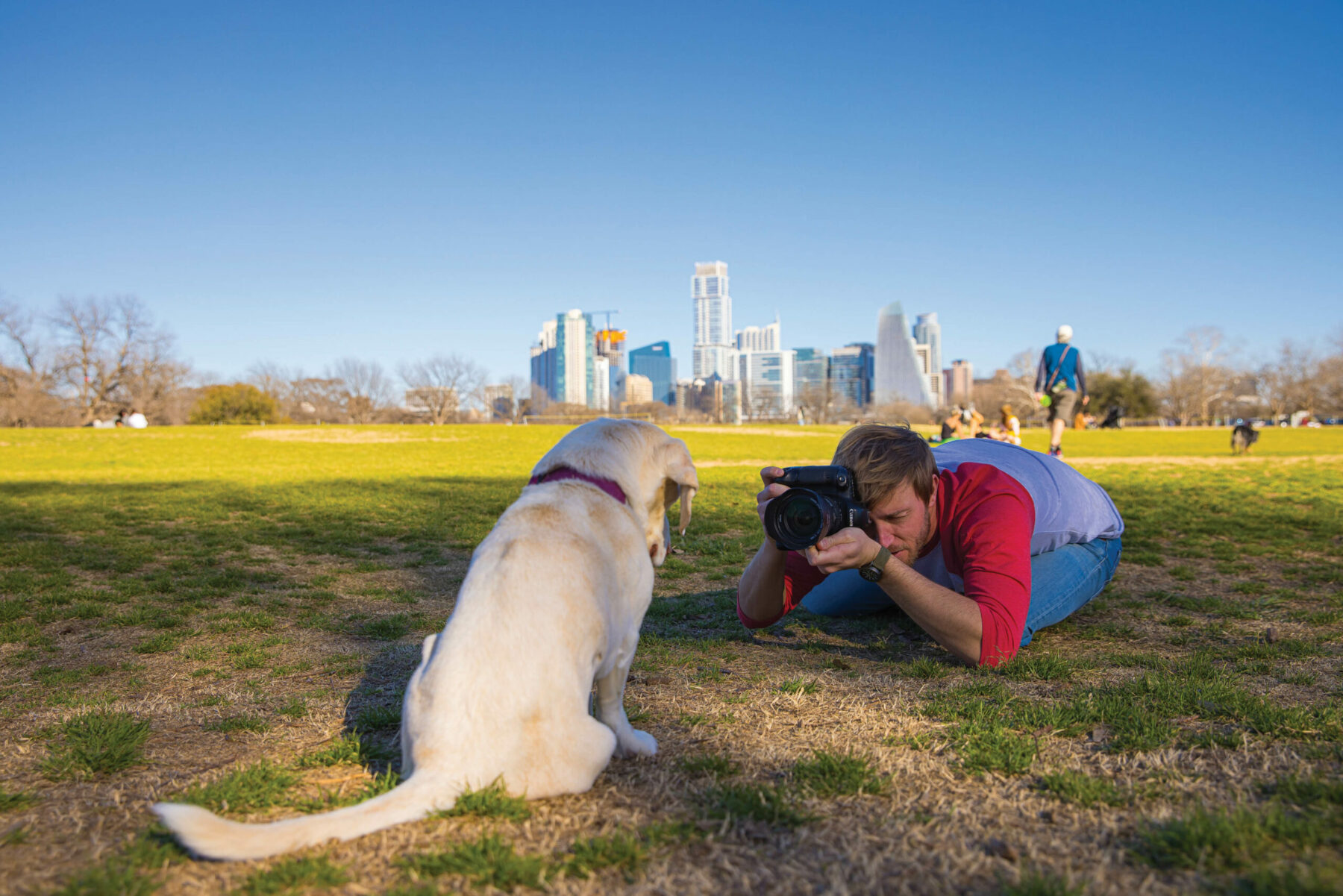Meet the Creator Behind ZilkerBark

The photography project that now brings so many smiles to people’s faces started with just a man, a dog and a camera.
In the spring of 2015, Alex Hopes created ZilkerBark, a photography project with one purpose — showcasing man’s best friend and sharing that joy with others. Now, with over 187,000 followers on Instagram, ZilkerBark has not only photographed over 25,000 dogs but has also raised and donated over $165,000 to animal shelters. But you can’t put an amount or number to the joy that these photos bring.
“We live in a world where there’s a lot of unfortunate things happening. There’s a lot of sadness,” Hopes says. “Being able to see a smiling puppy on a social media account is uplifting, and it’s a joy to see the way people respond.”
Hopes moved to Austin in the winter of 2012 without any community or a job lined up. He started pursuing photography about a year later with a crop sensor camera and began visiting Zilker Park more frequently in 2015.
During these visits, he brought his best friend, a trusty basset-beagle-corgi-lab mix named Sid (aka the Regal Beagle who went viral for happily holding pizza in his mouth). Hopes photographed Sid as well as the other dogs they would meet at Zilker.

Photography credit to Brian Fitzsimmons
“The best thing about getting into photography and having a dog is you have a model that’ll never say no,” Hopes says. “As long as you have a ball or treat, you always have somebody, always have something to photograph.”
In 2016, he started exclusively taking photos of dogs, posting them on social media. His Instagram handle was originally @zilkerpark, but he changed it to @zilkerbark several months later to fit the content’s theme. About nine or 10 months into running his social media account, he started hosting monetized photography sessions for dogs and their owners.
Though Sid is now 12 years old, Hopes remembers when Sid was just a puppy before Hopes started pursuing photography. Unfortunately, Hopes doesn’t have professional photos of his best friend to look back on, which is another reason why he thinks dog photography is something to cherish.
“Our dogs mean so much to us,” Hopes says. “It’s a shame if we don’t have those photos to remember them by because our dogs just don’t live long enough and the time flies.”
Today, Hopes says he has photographed over 40,000 dogs and still counting. Though he found his specialization only a few years after he started photography, he couldn’t imagine doing anything else.
Dog photography, for Hopes, is his favorite because photographing dogs is much more easygoing. With humans, taking unflattering photos of them is quickly rejected but unflattering photos of dogs are always adored — no matter how “derpy.” Additionally, since Hopes is colorblind, taking photos of dogs is much easier as their coat color is more subjective whereas managing human skin tone in photos can be difficult.
Not only are dogs easygoing in poses and coloring, but they are also universally responsive to the same thing — a squeaker. While taking photos of street dogs in Baja California, Mexico, he recognized that they don’t respond to commands such as “sit” or “stay.” However, they always pay attention to a squeak toy.
“(Photographing dogs) is a lot of fun, especially when you figure out how to bring those expressions out of the dogs,” Hopes says. “Dogs are just very honest creatures. They’ll always make a face about how they’re feeling. They can be very expressive.”
Hopes says one of the hardest parts about photographing dogs is when they’re not trained properly and/or when the owner brings them to the session without exhausting the dog’s energy first. He also mentions that although many dog owners understand their dog’s behavior more than anyone else, having too many cooks in the kitchen during a session can distract the dog from staying focused.
Many people also have the misconception that puppies are hard to photograph. However, Hopes says they are the easiest subject because they are less intelligent than adult dogs.
“Puppies will always fall for anything,” Hopes says. “If you walk backward, they’ll run after you. They’re also the best at head-tilting, which is a fantastic thing to photograph.”

Photography credit to Brian Fitzsimmons
On top of individual sessions, which are typically 30 minutes and scattered throughout the day, ZilkerBark also hosts events in which they can photograph up to 500 dogs in one day. After their sessions, they try their best to post each dog photographed on Instagram, but because they photograph so many dogs, it’s a challenge to share all of them.
Over the years, their team has grown from just Hopes to include three other photographers, four video assistants, a videographer and a social media copywriter. Surprisingly, though Zilker Park started it all, the team never actually hosts their sessions at that park as it’s a highly trafficked area with dogs, which can be distracting for the sessions.
Today, Hopes splits his time between Austin and Santa Fe, New Mexico. In his day-to-day, he plans for events and photographs dogs when he’s back in Austin. During the pandemic, especially, he and his team have been able to continue their work since photographing outdoors provides ample space for social distancing.
Hopes intends to expand to other cities in Texas but must first find dog photographers within those areas to take up the work. He also looks forward to seeing their repeat clients and enjoys getting to watch the dogs they photograph as they grow up.
At the end of the day, ZilkerBark is a platform in which Hopes is able to express his love for dogs and allow others to do the same.
“ZilkerBark is a community-oriented energy that supports the animals we love so much,” Hopes says. “Dogs have become such integral parts of our lives and families that being able to appreciate them and show them off through photography is no longer a luxury but a necessity.”






